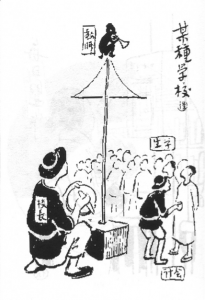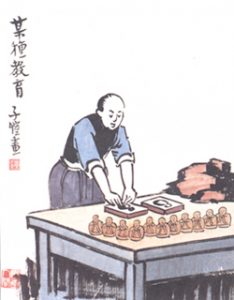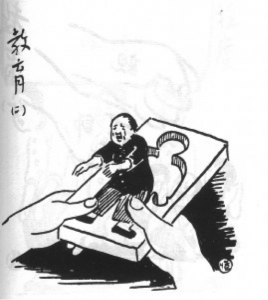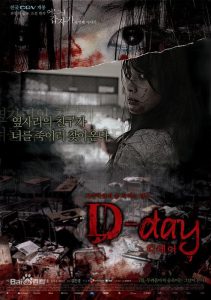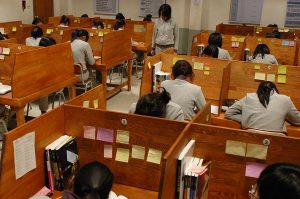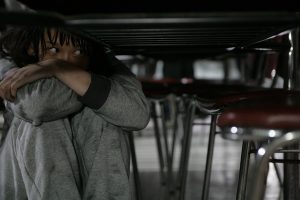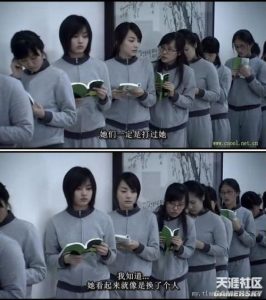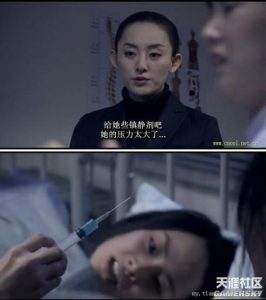Feng Zikai (1898-1975) is one of the most gifted political and artistic figures in China in the 1920s and 1930s. The 1920s was an era of deep political and social instability, a time when the future and destiny of China was blurry and uncertain.
Feng was a painter, writer, music educator, translator, calligrapher and art theorist. In fact, Feng is considered to be the founder of modern Chinese cartoon art. His essays and cartoons are still popular among the Chinese public today. Feng’s cartoons seek to furnish his viewer with a degree of critical distance. He injects irony into his paintings, so that his viewer will be prompted to take a step back and examine the social issues in China that are subtly embedded in his work.
The cartoons below reflect Feng’s critical perspective on a gamut of issues with the education system in China, which ranges from the elementary school to university level.
You can find more of his works here: https://www.pinterest.com/mymurmuring/feng-zikai/
Imagination”
To Feng, the job of an educator is similar to that of a gardener, who trims and prunes his plants so that they can flourish later. Feng draws his viewer’s attention to the cruel ways in which the education system in China stifles students’ minds and their ability to think for themselves. Feng suggests that the system in China is more interested to standardise students, pressuring them to conform to a certain pattern of thinking.
“Somewhat School”
Schools were part of the problem of perpetuating a vicious cycle of capitalism and standardization in learning. In this cartoon, the monkey on top of the pole is the teacher, the administrators are playing a tune, students are watching, and of course someone is collecting money.
“Somewhat Teacher”
Teachers might try to destroy students’ minds with endless drill and repetition. These teachers do not alter or update their pedagogy. Instead, they behave like a gramophone that is used to play the same old tune for years. Feng criticizes the formalist, stubborn teaching style practiced by some educators today, and he encourages them to innovate and improve themselves instead.
“Somewhat Education”
Figuratively speaking, education can be seen as a process of transforming raw materials into beautiful sculptures. In this cartoon, Feng criticises the Chinese education system that aims to kill the unique characteristic of individual, by shaping everyone using a singular template or model.
“Being educated”
This one follows the previous painting, but it is now from the perspective from the students. It does not seem fun for them to be shaped from this one model.
Questions:
Even though Mr. Feng passed away more than forty years ago, the severe problem of Chinese society and our education system persists. We still have not figured out a way to offer students with special talents another way to grow and the society still pushes young people so hard with mandatory college entrance examinations. I would like to ask your thoughts on the cartoons I posted:
- Do you have thoughts on why China still continues to adopt such a standardised way of assessing its students?
- How do you compare the current Chinese education system and the one Mr. Feng described in his paintings?
- Do you see any progress or regression in China?

